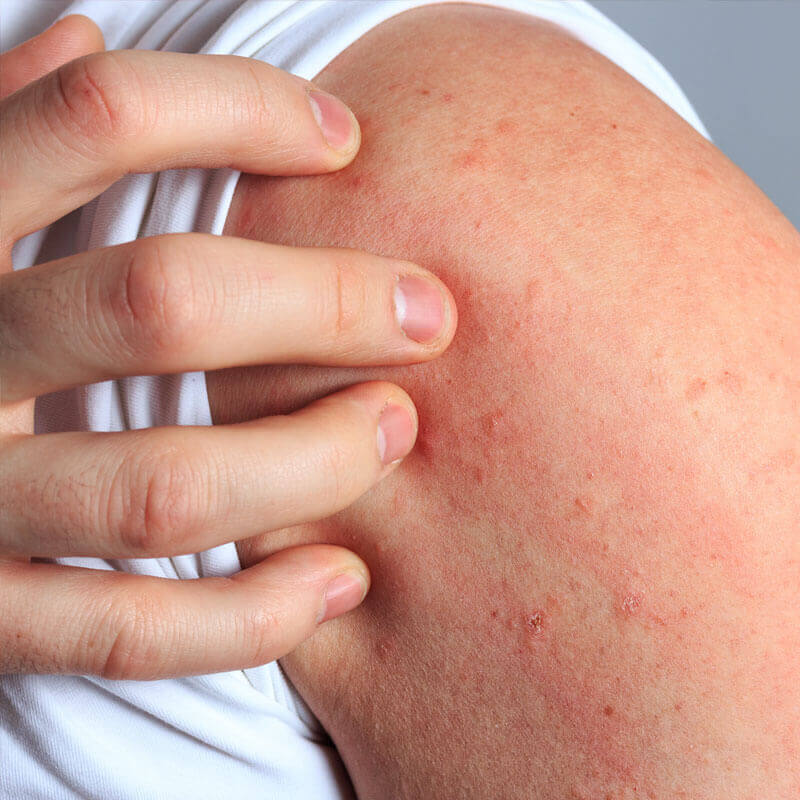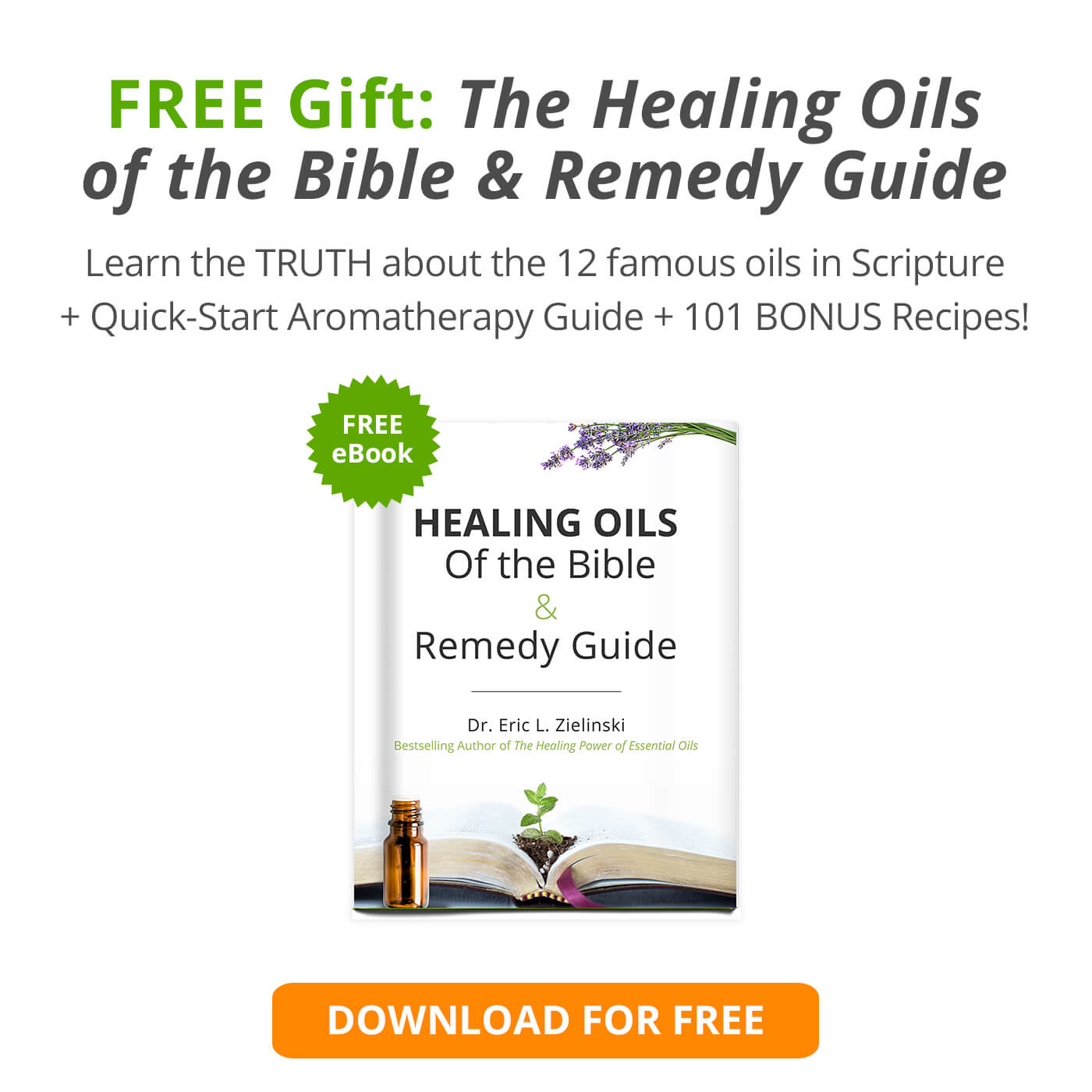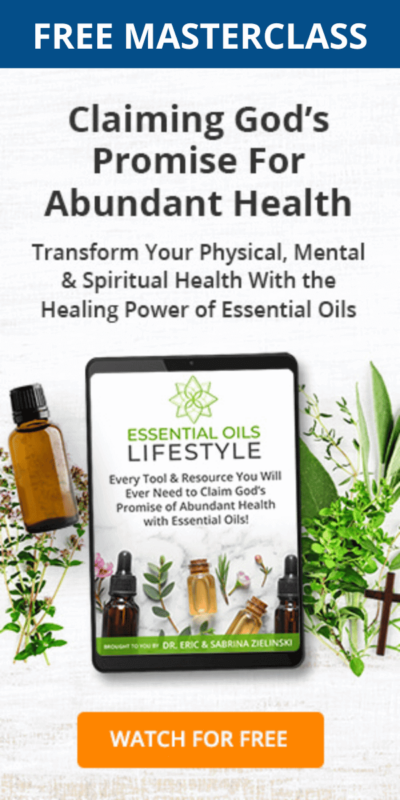Many doctors are not well versed on histamine intolerance, though, with the growing number of patients presenting similar (unexplained) symptoms, we are seeing that it is becoming a hot button issue within the medical industry.
Table of Contents
What Is Histamine Intolerance?
According to the American Journal of Clinical Nutrition, histamine intolerance is, “Disequilibrium of accumulated histamine and the capacity for histamine degradation.” (1)
Basically, what this says is we’re not necessarily growing more and more sensitive to histamine, we just have too much of it in our bodies. There are many reasons why histamine is building up in our bodies, the most common being that the molecule does not properly break down and degrade normally.
While most people probably association histamine with allergic reactions, histamine is actually an important element that performs these three essential functions: (2)
- An inflammatory reaction mechanism dilating blood vessels to enable white cells to reach and neutralize invaders.
- A factor of stomach acid helping to digest food.
- A neurotransmitter, a chemical go-between that passes from one neuron to another in the nervous system.
These three functions are vital to human life. But when these histamine levels get out of whack, we can experience significant disruptions in our lives. The result can even be deadly.
The two major enzymes in the human body that reduce histamine are N-Methyltransferase (HMT) and diamine oxidase (DAO). (3) HMT works with histamine in our central nervous systems while DAO works to break down histamine in the foods we consume. The most common cause of additional histamine is the failure of DAO to do its job, making the enzyme responsible for the increase in histamine intolerance cases we are seeing today. It is because of the failure of DAO that histamine can go unchecked and cause hostile symptoms.
But what’s causing the breakdown in DAO? There are a number of reasons and they have internal and external triggers.
- Certain foods we eat can block DAO
- Some foods have high levels of histamine and can lead to some level of dysfunction.
- Medications – both prescription and over-the-counter – can stop DAO from doing its job.
- Gut health issues, such as gastrointestinal disease, can block DAO.
Certain foods – even those that do not contain histamine – can exacerbate the problem since they can trigger the body to release histamine. The more forces blocking DAO while the body produces histamine, the worse the reaction for patients.
Common Symptoms
At least 1 percent of the world’s population suffers from histamine intolerance, according to experts, and middle-aged women seem to be the most susceptible as they represent 80 percent of those affected. (1)
There is one frustrating thing that many of us who stick to a natural health regime experience: Odd symptoms of histamine intolerance we feel shortly after eating our allergy friendly diets. For years, doctors would just write off headaches, itchy skin and runny noses associated with eating to food allergies. But now we know it’s not that simple as IgE allergy-mediated response tests usually turn up undesirable results.
However, the rarity of the condition is simply because western doctors refuse to recognize histamine intolerance. This means way too many cases go undiagnosed and untreated. However, when you consider the extent of the symptoms of histamine intolerance, that lapse is a little more understandable.
People suffering from a histamine intolerance will see a variety of symptoms as long as our typical defensive mechanisms gain unusually elevated levels of histamine that go beyond the body’s normal ability to break down. (4) This list below reflects just a few of the allergy-heavy symptoms, so it is wise to consider histamine intolerance whenever the following symptoms appear:
- Hives
- Swelling or inflammation
- Fever
- Rapid heart rate
- Sneezing
- Sinus issues
- Congestion
- Nausea or vomiting
- Itching
- Low blood pressure
- High blood pressure
- Acid reflux
- Headache
- Flushing
- Fatigue
- Dizziness
- Difficulty sleeping
- Indigestion
- Pink eye (conjunctivitis)
- Problems breathing
- Anxiety
- Abnormal menstrual cycle
- Abdominal cramps
Sadly, this wide range of symptoms usually leads to an incorrect diagnosis long before histamine intolerance is even considered. This dilemma is compounded because patients will most likely continue to eat things deemed healthy and nutritious and many of their lifestyle shortcomings are hard to see. In the end, it takes time to accurately diagnose a histamine intolerance and most people and their doctors get frustrated long before getting the diagnosis.
4 Risk Factors
Many unconnected factors ultimately lead to histamine intolerance. I talked about DAO blocking above, but others include gut health (gastrointestinal) issues, bacterial overgrowth and, shockingly, UV light.
1. Diamine Oxidase Blocking
As I mentioned above, diamine oxidase (DAO) can be stopped, which means not enough of the enzyme is available to handle the elevated levels of histamine created in our bodies or consumed in our food. Many foods carry high levels of histamine and some even work to block DAO. This combination can cause an eruption of symptoms.
2. Gut Health Issues
A plethora of gastrointestinal issues could be the result of histamine intolerance: (5)
- Small intestine bacterial overgrowth (SIBO)
- Inflammatory bowel disease (IBS)
- Ulcerative colitis
- Crohn’s disease
- Leaky gut syndrome
- Gluten sensitivity
3. Bacterial Overgrowth
One interesting school of thought that seems to be gaining traction is that histamine intolerance is actually the result of overgrowth of bacteria from undigested food. This undigested food produces a glut of histamine that cannot be broken down by DAO. This is an excellent explanation why people with allergies suffer from a variety of gut health issues.
4. Ultra Violet Light
Now this is interesting: Recent research suggests that UV light can trigger additional histamine release. In fact, a study on UV light’s impact on histamine discovered that the reaction could be heightened by select phenothiazine compounds, which are found in prescription drugs relating to psychiatric treatments for conditions ranging from anxiety and depression to schizophrenia.
Still, countless over-the-counter and prescribed medications affect DAO directly or indirectly. Anyone taking drugs for the disorders below and suffering from recurring ‘allergy’ symptoms should consider histamine intolerance: (6)
- H2 Histamine blockers – Pepcid, Zantac, Tagamet
- Antiarrhythmics – Cardizem, Norvasc, propanolol, metaprolol
- Antihistamines – Benadryl, Allegra, Zyrtec
- Antidepressants and antipsychotics – Prozac, Zoloft, Effexor, Cymbalta
- Immune modulators – Enbrel, Plaquenil, Humira
- Non-steroidal Anti-inflammatory Drugs (NSAIDS) – aspirin and ibuprofen
4 Natural Strategies
Some cases of histamine intolerance, such as those derived from an acquired cause like medication, can usually be diagnosed and reversed rather quickly. However, it’s the more benign causes that are difficult to diagnose and treat. While you can choose to have your DAO levels tested, here are four alternative strategies that can also help.
Pick up our Essential Oils Diet book today for a low histamine friendly approach to eating that tastes great and will bring healing to your body!
1. Eat Low Histamine Foods
In addition to protein-heavy foods, here’s a list of foods that are known to intensify a histamine intolerance:
- Yeast
- Vinegar and related products, for example ketchup and mustard
- Tomatoes – fresh, canned, pureed or in sauces
- Tea
- Spices – including curry powder, cayenne, chili, cloves, cinnamon, nutmeg
- Spinach
- Seafood – shell or fin fish, frozen, fresh, canned or smoked
- Mushrooms
- Meats that are processed, cured, smoked or fermented
- Leftover meats
- Fermented foods such as pickles, relishes, and sauerkraut
- Fermented dairy products including cheese, yogurt and buttermilk
- Dried fruit
- Chocolate and cocoa
- Berries – fresh, frozen or canned
- Any foods with artificial coloring or preservatives
- All citrus – oranges, lemons, lime or grapefruit
- Alcohol and other fermented drinks
But before we get a little carried away, it’s important to note that humans have been consuming many of these items for several millennia without any serious side effects. Many of the items on this list, however, are pickled, fermented or aged – all preservation practices that were done at home prior to the invention of the refrigerator.
2. Low Protein Diet
Histamines are produced from amino acids and amino acids come from proteins, so it would make sense that high-protein foods can have a big impact on histamine production. Plus, the longer food sits in the gut the more bacteria can grow and fuel the problem.
3. DAO Supplement
One great alternative that is preferable to most patients is DAO supplementation. However, DAO supplements can be hard to come by and cost a pretty penny. This option not only improves your quality of life, it allows you to skip the elimination diet.
4. Elimination Diet
And that’s a great segue into point #4. One of the first things doctors will recommend for histamine intolerance is an elimination diet. This is where you remove certain foods one at a time and see how your body reacts. These foods are then reintroduced and symptoms are monitored.
Foods to Reduce Histamine Levels
When dealing with a histamine intolerance, it’s important to not only reduce histamine rich foods, but foods that block DAO. If you decide to go this route, here are a few food items you can consume:
- Herbal teas
- Leafy herbs
- Olive oil and coconut oil for cooking
- Dairy substitutes – almond, coconut, hemp and rice milks
- Organic, pure peanut butter
- Fresh vegetables excluding avocado, eggplant, spinach, tomatoes
- Fresh fruits – apple, cantaloupe, grapes, kiwi, mango, pear, watermelon
- Gluten free rice and quinoa
- Eggs (although the whites can stimulate histamine release in some people)
- Meats and poultry but only if they are freshly cooked from fresh or frozen
- Fresh fish
Be sure to avoid the following because they block DAO:
- Alcohol (7)
- Caffeinated beverages like tea and energy drinks
- Various pharmaceuticals (consult with your MD to see if you’re at risk)
Yes, I know, this list is short. But this is the only true cure for those with severe histamine intolerances. You can take the time to get your body functioning properly again, but as soon as you are diagnosed, this is the first step to better health.
If you suffer from histamine intolerance, we have found that most people do well following the advice in our Essential Oils Diet book. Like anything, there needs to be some patience for trial and error. With some modifications to our bestselling protocol, our hope and prayer is that you find relief soon and it’s long-standing!
- https://pubmed.ncbi.nlm.nih.gov/17490952/
- http://sepa.duq.edu/regmed/immune/histamine.html
- https://academic.oup.com/ajcn/article/85/5/1185/4633007
- https://www.histamineintolerance.org.uk/exclusive-10-questions-answered-about-histamine-intolerance/
- https://academic.oup.com/ajcn/article/85/5/1185/4633007
- https://pubmed.ncbi.nlm.nih.gov/9950269/
- http://www.deficitdao.org/en/dao-deficiency/histamine/food-which-interferes-in-histamine-metabolism/dao-blocking-foods/







